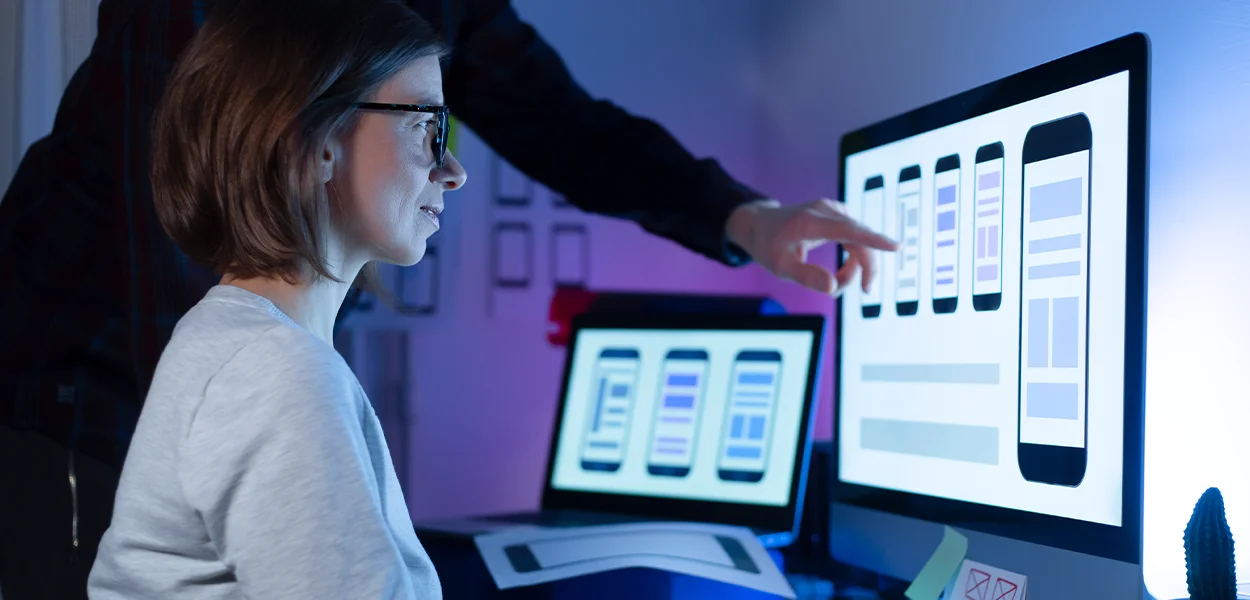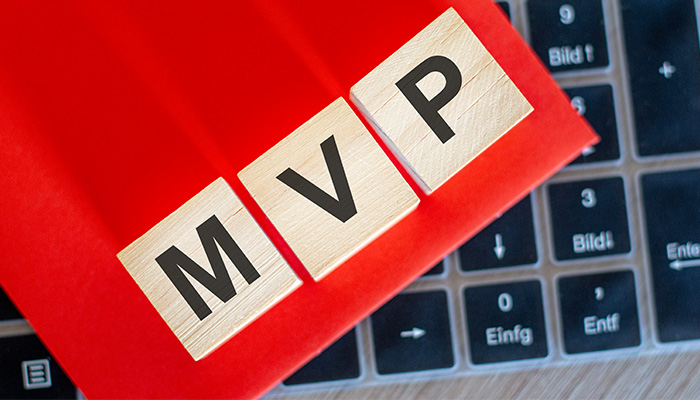Prototype vs. MVP: Which One Do You Need?
Prototype vs. MVP: Which One Do You Need?
Oct 18, 2023 15:15 PM
Prototype vs. MVP: Which One Do You Need?
Oct 18, 2023 15:15 PM

Everyone has heard the stories of SaaS startups that started in basements and grew into multi-billion-dollar businesses. There are thousands of products that, while conceptually sound, lack the planning and execution necessary to reach their full potential.
You shouldn't be discouraged by the high failure rate in product development. It would be best to take it as a warning from thousands of other people not to rush into the process.
You, as an entrepreneur, are going to face a lot of challenges to launch your product. The biggest challenge is probably figuring out what your customers want and need. It is essential to plan before beginning the development process.
Prototyping and the MVP (minimum viable product) are essential strategies to reduce risk and uncertainty during the product development cycle.
This article will explore the benefits and disadvantages of using prototypes and MVPs. It will also explain when each should be used.
A prototype is a sample product to test your business idea before it's implemented. Your product idea is simplified into a format easily understood to show its value.
The prototyping process makes it easy to identify gaps and discover all requirements and specifications. This cost-effective and time-saving method allows you to adapt your product concept in response to user feedback and testing.
A prototype is an excellent way to showcase your product design. This helps to understand the complicated algorithms and processes that the system requires. A prototype can take many forms, depending on the goal.
Functional:It mimics a single or two product functions.
Display:It focuses on the appearance and feel of the products.
Prototypes are available in the following formats:
Paper-based (e.g., hand-drawn wireframes)
Digital (e.g., UI mockups and interactive "clickable versions")
Miniature (e.g., IoT product sample)
Prototypes and MVPs are a great way to save money and time by identifying the "gotchas" while the project moves quickly and fluidly.
This half-step will allow you to test your idea, try out different functionalities, and feedback from those who will ultimately give you money.
Priority should be given to solving the problems of your customers. The fastest and cheapest way to achieve this is by using prototypes and MVPs. You will also learn what a good user experience is and how to avoid costly mistakes.
When you are thinking about pitching your idea to investors, having a simple MVP or lightweight prototype makes the conversation much more accessible.
If you want to work with a company like PerfectionGeeks to build your MVP or final products, having an MVP or prototype that is well thought out will save you time and money. We appreciate it when clients take the time to figure this out.

The prototyping process involves the creation of a version of your design that can be evaluated and tested before it is finalized. Most web agencies, like ourselves, build static frames in Figma before connecting them. The result is an interactive model that appears like a completed desktop or mobile app and allows users to interact with certain elements such as buttons, dropdowns, and fields.
It is essential to create a prototype quickly while capturing all the product's functionality. You can easily fall into the trap of spending too much time on something beautiful, but it doesn't perform as intended.
A minimum viable product (MVP) is a releasable version of your software with enough core features to appeal to early adopters. The interaction of early adopters with an MVP allows you to get to know and understand your target audience and their expectations. You can also gauge how they accept your product and what features they enjoy and dislike. This approach allows you to build your product in small steps, collect feedback, and test your assumptions.
Every release allows you to learn more about the users so that you can better address their pain points and needs by refining your product. According to the feedback you receive, it may be necessary to pivot, refocus on your core features, or start over with a brand-new product. Repeat these steps until your MVP is a fully-fledged, finished product.
Minimum Viable Product (MVP) is the most basic form of your product, with the fewest features necessary to satisfy the customer. It should be focused on the "unique selling proposition," or what makes it unique from other products.
The MVPs require a lot more work than prototypes. However, if they are good enough, you can make money immediately. They do come with a lot of challenges. It is easy to get off the "leanest route"" when prototyping.
It can be tempting to add more features than needed to the "best possible product" as the mastermind of the product. It doesn't matter how many features are added to a product if it fails.
It's impossible to say what an MVP will look like in 2023. No-code is the new trend, and it's a great way to get things done quickly. Some MVPs may need to be created as web applications. Many remarkable full-stack frameworks (like Next.js!) can streamline this process. This process can be streamlined by using full-stack frameworks (like Next.js!).
Both prototypes and MVPs can be extremely useful, but sometimes one is more important than the other. Prototyping has its pros and cons.
Identifies issues and design flaws before the product is launched.
Designing complex ideas can be difficult, and the designs may hide some problems. A prototype is an excellent way to reveal these potential show-stoppers.
Rapid iteration and experimentation
Because prototyping does not require coding or intricate design work, it is easy to iterate quickly and cycle ideas.
Low cost and low effort
Most decent UI/UX designers can create a prototype within a few days.
It is simple to capture and record feedback.
Figma is an excellent tool for creating and displaying prototypes. This allows feedback to be given directly to the prototype. This helps streamline the feedback process by identifying the areas most people think need improvement.
The "look and feel" of a website can influence feedback.
Not everyone can see that a prototype product is not a finalized product. This is where their feedback focuses.
Anyone could make a poorly designed prototype.
Prototyping is not a barrier to entry. A poorly designed and thought-out prototype can lead to unrealistic expectations. When a client decides something must happen, it is hard to convince them otherwise.
This HTML code is not fully functional.
While prototyping can be an excellent conversation starter, it cannot do much.
The MVP is an excellent tool for a few things, but it cannot do everything. Here are some pros and cons of building an MVP:
Cash generation
It costs money to create an MVP, unless it's something you build yourself. If you have identified a customer pain point, you can start generating revenue and fund your product's development.
Functional rather than conceptual
It's a great way to show potential clients, investors, or other essential stakeholders that your product works. It shows that you are committed to your idea and have laid the groundwork for it to succeed.
Building an MVP reveals more "gotchas."
The prototypes you create can only provide a limited amount of help in tackling the problems that surround your idea. You'll find the rest in your product's logic. Only by building an MVP can you find out what's missing.
Exposure to fast-moving copies
Unfortunately, MVPs have this disadvantage, but the software industry is highly competitive. If your MVP succeeds, someone may race to create a fully-featured version.
A costly way to test an idea
It can be costly to skip the prototyping phase and build an MVP, only to discover that customers do not want it. You're likely to spend upwards of $10,000 if you don't build an MVP platform that doesn't require any. codi Building the "best viable product" is easy.
It is widespread for MVPs to lose focus and allow the scope of their product to grow. When you want your product to succeed, it's difficult to resist. But the cost is time and money, without guaranteeing a greater return.
Prototyping is also used to Prototyping can also be used to:
Finding and repairing gaps in the product stream
The customer needs identification
How to get funding by showing your product in action
Getting customer feedback without actually developing
A polished and user-tested prototype can be an excellent base for future product development. Before you begin full-scale product development, let's discuss one last approach.
It is always risky to develop new products. CB Insights discovered that 1 in 3 startups (or more precisely, 35% of them) fail because they do not satisfy a need on the market. By starting with an MVP, you can reduce the risks. Save time and money by determining whether you should proceed, adapt, or go back to the drawing board.
There are many other reasons why you should build an MVP
Start your business with the minimum resources.
Crowd sourced funding, or venture capital, is a great way to secure funds.
Avoiding major product rejections
Customer relationship management
Create better final products
An MVP is the best way to determine if a product is worth developing and to identify any issues that could hinder its profitability.
We'll focus on the differences between them now that you know about all three methods of idea verification. It's really quite simple.
There are other options besides prototypes and MVPs. Other techniques and tools that are worth paying attention to include:
We've discussed this method a few times, which is worth considering. Platforms like Bubble let non-technical people build complete applications. These applications could become actual products without writing a single line of code.
It goes without saying that if you are confident in your product, you can bypass the testing phase. This is a time-consuming and expensive approach, but you can create a more comprehensive product.
Let's compare the two methods of product testing:
The MVP takes weeks or months, while prototypes can take just a few days. It's impossible to compare. Even using a platform that doesn't require coding to create an MVP is more expensive than using Figma for free prototyping.
The prototype quickly gathers customer feedback but doesn't bring you closer to building a natural product. You could say that MVPs are the basis of a product and are already "on the market."
Both formats are excellent for gathering feedback. MVPs are realistic versions of ideas. Prototypes can be made to be more like the final product.
Whether to build an MVP or a prototype is impossible to answer in black and white. There are just too many variables. It pays to do both in most cases.
You can use prototypes to get feedback from those more familiar with the idea. Your MVP can then be sent to your customers.
Businesses that want to create successful products can benefit from using MVPs and prototype features. Businesses can reduce costs and risk by testing and getting feedback on essential features. Business owners must weigh the pros and cons and choose the best approach to their needs. There is a solution for every business, whether based on cost, time to launch, customer feedback, or complexity. By carefully evaluating options and making informed choices, businesses can develop successful products that help their customers achieve their goals.
Strategy
Design
Blockchain Solution
Development
Launching
Testing
Maintenance
Contact US!

Plot 378-379, Udyog Vihar Phase 4 Rd, near nokia building, Electronic City, Phase IV, Sector 19, Gurugram, Haryana 122015
Copyright © 2025 PerfectionGeeks Technologies | All Rights Reserved | Policy
Contact US!

Plot 378-379, Udyog Vihar Phase 4 Rd, near nokia building, Electronic City, Phase IV, Sector 19, Gurugram, Haryana 122015
Copyright © 2025 PerfectionGeeks Technologies | All Rights Reserved | Policy